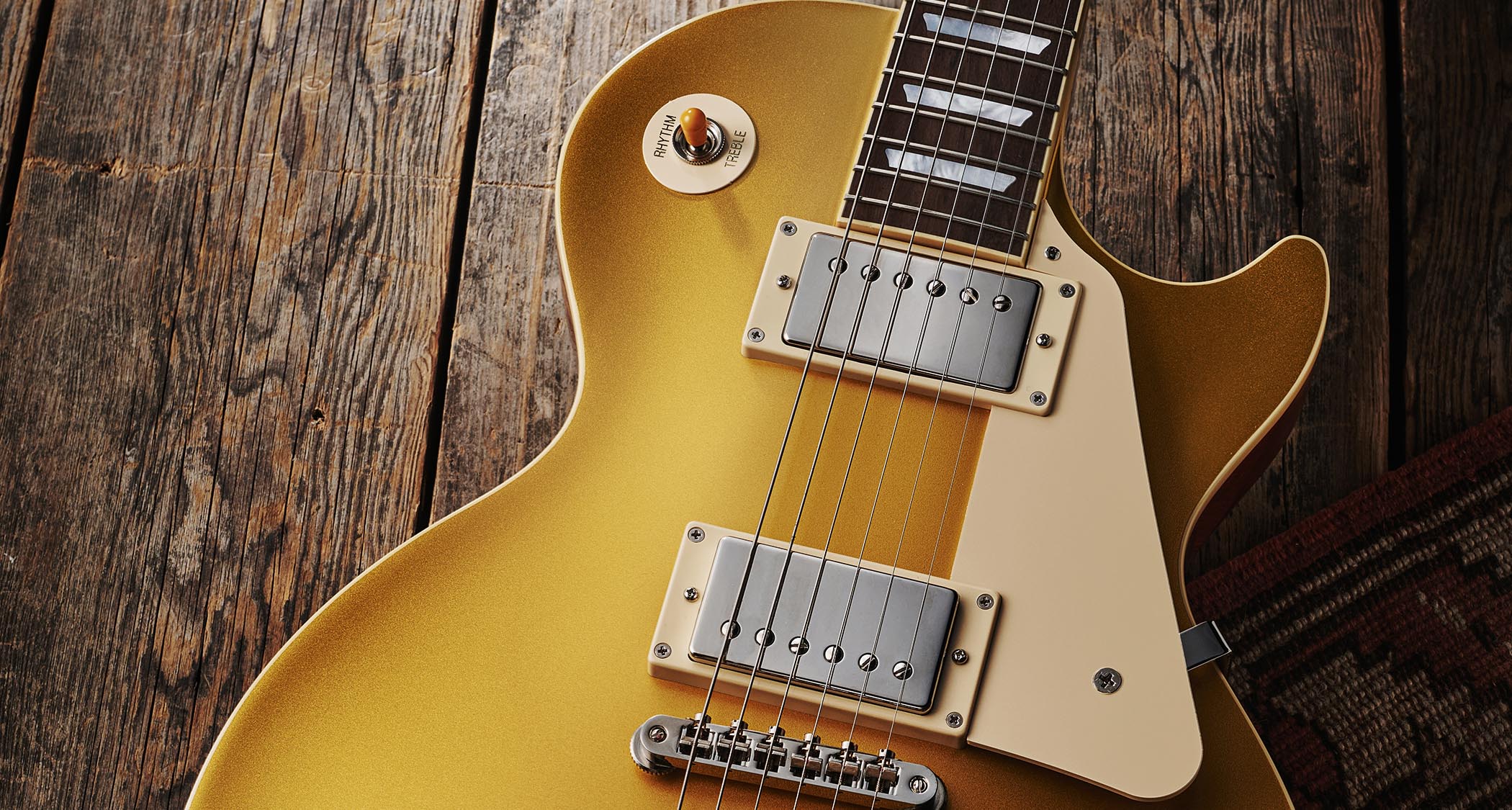
What is it?
Whatever the evolution of the Les Paul design over the years, plenty of us still want it just how it was – at least in appearance. Few can afford prime examples of the real thing, and Gibson Custom’s vintage-aimed models are slipping into the ether, too, in terms of price.
Even a rather good Gibson USA 50s or 60s Les Paul Standard will cost you £2.7k. And while these are available in a host of colours, they’re very shiny, new and far from vintage in the looks department.
Gibson’s in-house answer, then, is Epiphone and the premise of a number of recently launched ‘reissues’ in its top-tier ‘Inspired By Gibson Custom’ strand, including a 1960 Les Paul Standard in Washed Cherry Sunburst and Iced Tea Burst, and the 1957 Goldtop we have here.
The term reissue is used on these new models “to differentiate them from the ones that came before”, Gibson tells us, and to highlight numerous changes to last year’s ‘Inspired By Gibson Custom’ models: for example, the fingerboard wood, finish and vintage-style capacitors.
But navigating your way through Epiphone’s Les Paul line-up isn’t immediately straightforward. Topping the ‘Inspired By Gibson Custom’ collection is the Kirk Hammett Greeny that made many, including ourselves, sit up and take notice.
At a premium price for an Epiphone guitar (£1,499), it not only restored the Gibson ‘open-book’ headstock but also included a pair of Gibson USA Greenybuckers. With no artist attachment, our 1957 Goldtop is more keenly priced but still comes in a vintage-y hard guitar case, uses the Gibson Custom staple Custombucker humbuckers and restores the correct fingerboard wood, rosewood, instead of the laurel that Greeny and many others have used.
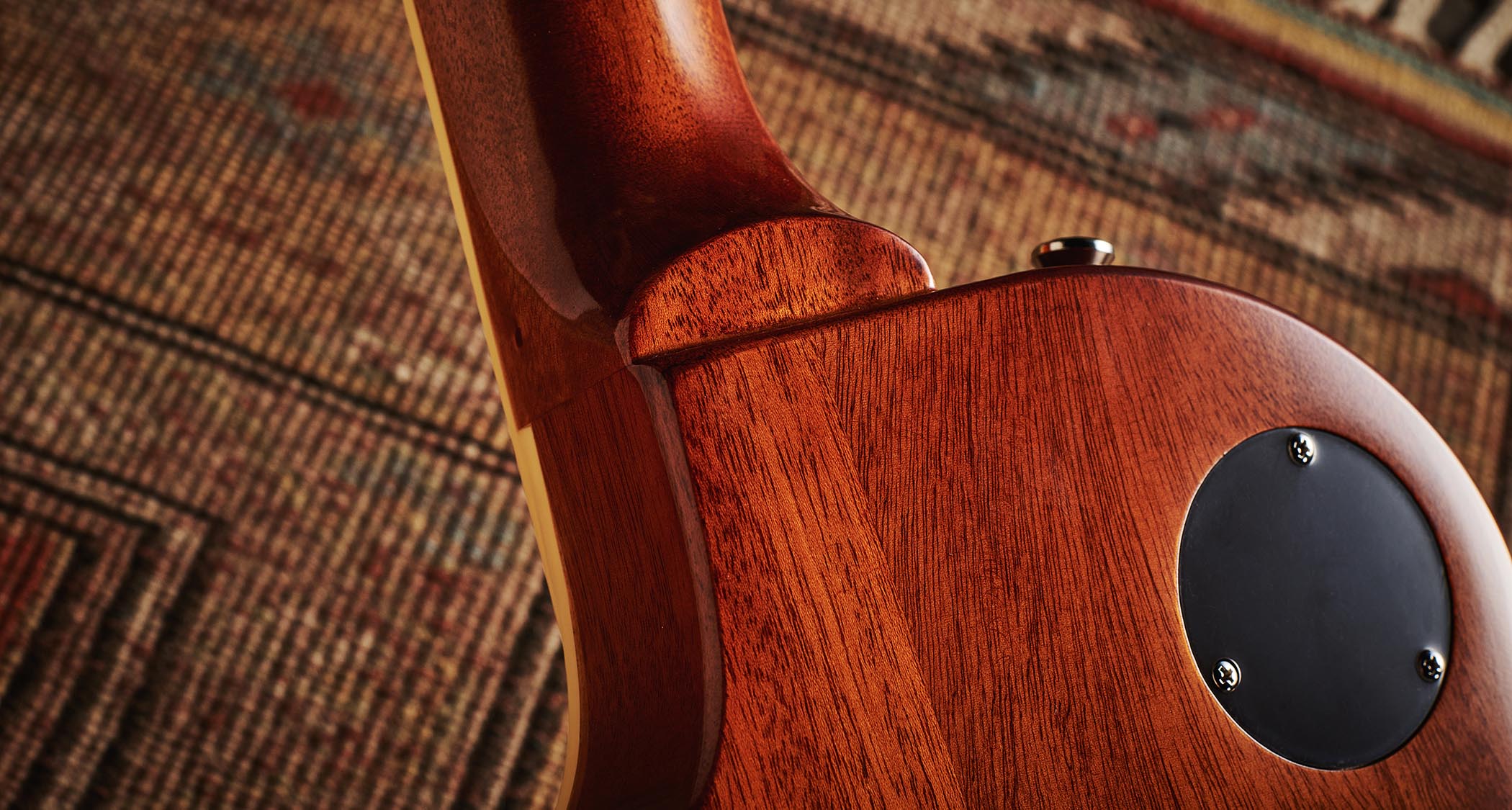
The typically high-gloss polyester finishes of plenty of Epiphones don’t fit a repro of an old guitar that would have used a thin nitrocellulose finish. The Greeny’s Greeny Burst went for a satin front with lightly burnished back, sides and neck – not identical to the real thing, of course, but a credible nod in the right direction.
Our 1957 GT takes a similar path and is finished in a “new Vintage Gloss version of the classic Gold colour that gives it a vintage appearance without looking overly aged”, says Gibson.
The case looks the part, but lifting the guitar out, we’re wondering if we’ve got the year right. Is this a 1975 boat anchor?
But is this all style over substance, you might well ask? After all, Gibson’s creatives expound that “the 1957 Les Paul Goldtop Reissue isn’t just a guitar; it’s a bridge to a symphony of possibilities…”
The hard case looks the part, as does the guitar nestled inside, but lifting it out, we’re wondering if we’ve got the year right. Is this a 1975 boat anchor?
Having played some great-weight Epiphone LPs over the past months – that Greeny was 3.91kg (8.6lb) and the lowly Joe Bonamassa 1955 Copper Iridescent was very close at 3.96kg (8.71lb) – this new ’57 is a whopper at 4.56kg (10lb) and we can’t help thinking that the aforementioned “symphony of possibilities” might well include a future visit to the chiropractor.
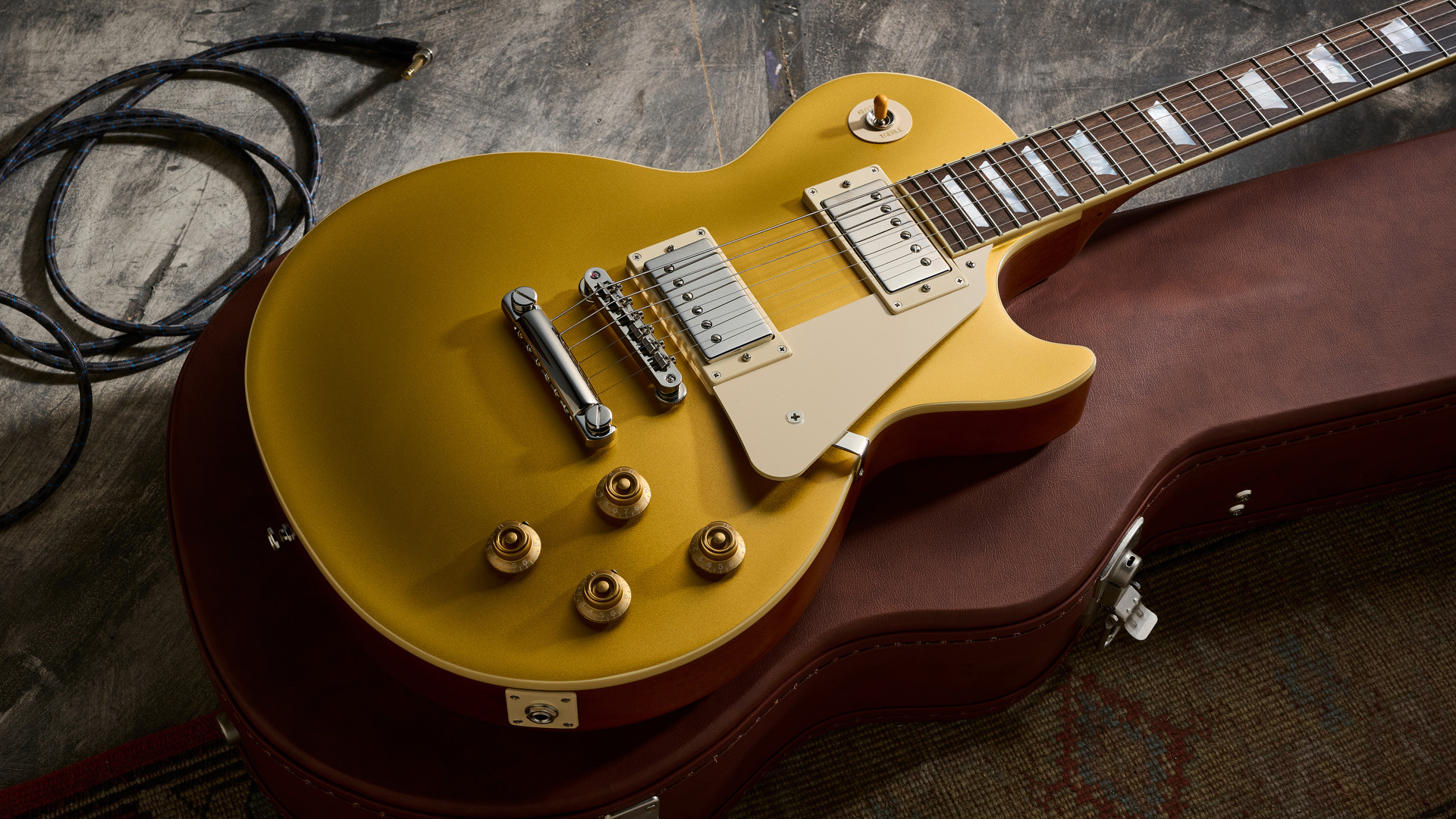
Weight aside, the craft on show is rather good. Through the low-gloss sheen of the back, sides and neck back the centre-joined two-piece back is classic mahogany in hue with a pretty tight grain.
The neck – save for the headstock widening wings – is one piece, while smaller details such as the binding in the cutaway don’t cover the full depth of the maple top. It’s the only bit of maple you can see, of course, and that top colour is a silky satin sheen, while the clearly scraped binding is very well done.
No complaints with the hardware, either. The Kluson-style tuners look the part and, more importantly, have a smooth action, while the bridge and tailpiece seem pretty generic – there’s a small ‘G’ on the underside of the lightweight stud tailpiece and a raised ‘B-2’ visible on the underside of the ABR-1-style tune-o-matic.
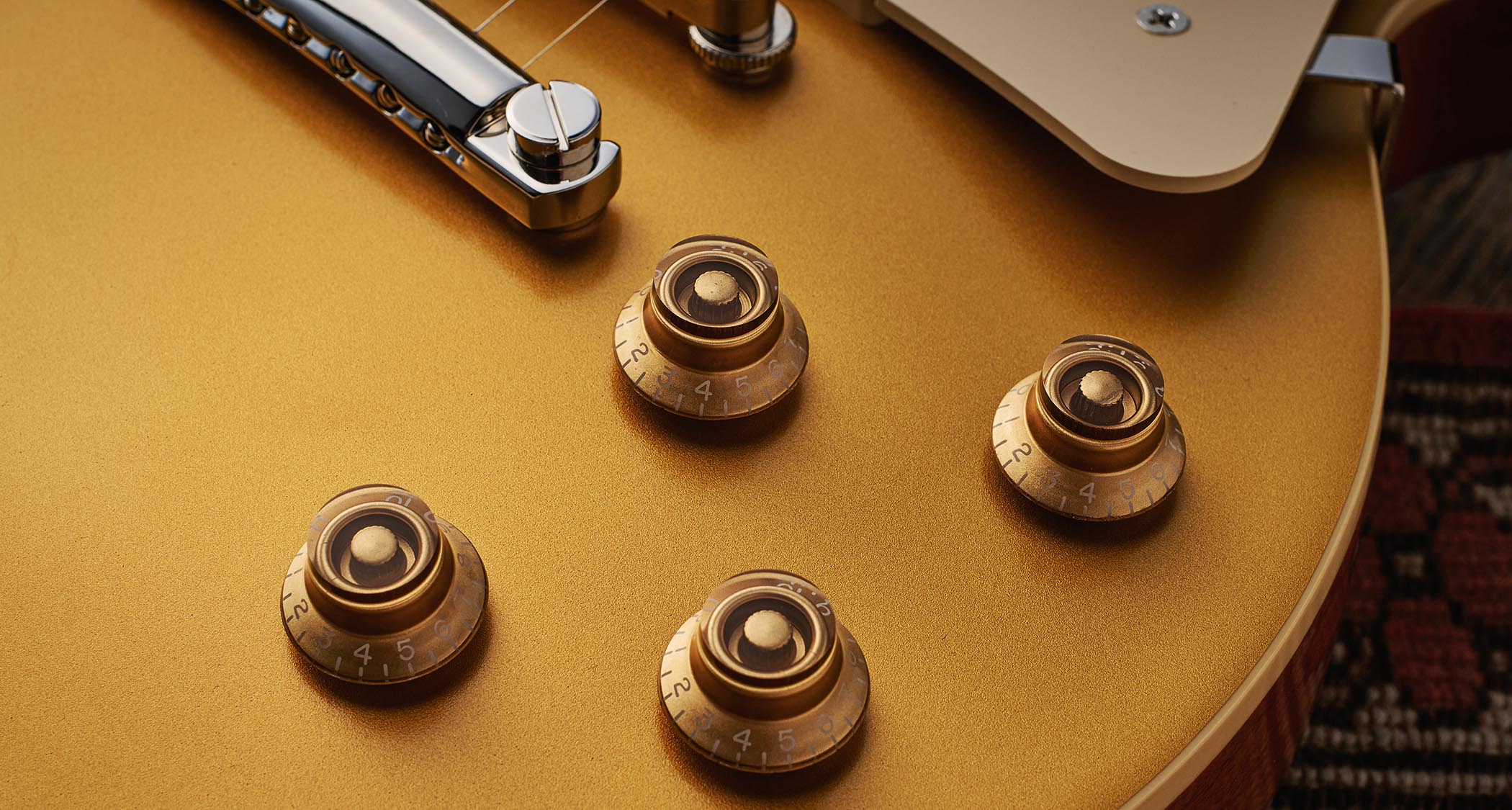
These are more ‘historic’-style parts, and that stopbar will slip off its posts when you’re restringing (unlike Epiphone’s LockTone bridge and tailpiece), although the tune-o-matic here is quite firmly mounted on its two posts and it’s a good height, too.
Niggles? Aside from the weight of our sample, there’s a very slight indented line in the top finish (perhaps a glue-line that hasn’t been properly joined and/or filled); the fit of the USA pickups in their rather flexible Asian-made pickup rings is a little off; while the unbevelled edge of the pickguard is unnecessarily sharp, as are the tops of the control knobs.
Specs
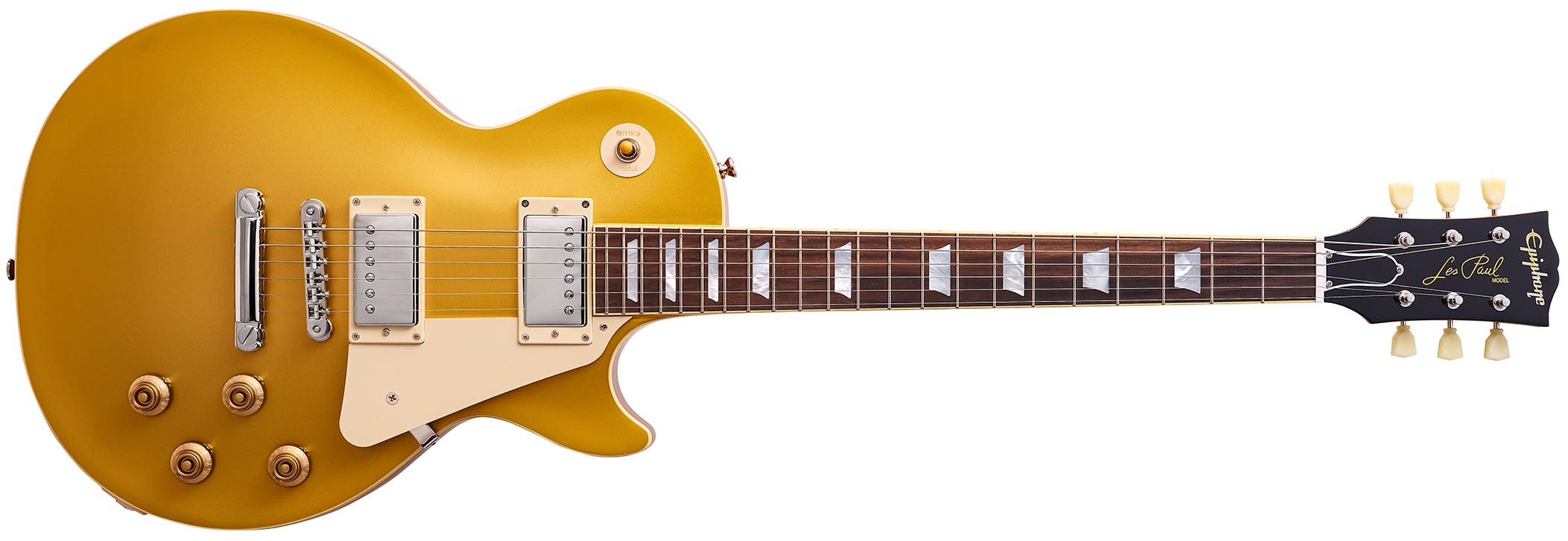
- PRICE: $1,299/£1,199/€1,399
- ORIGIN: China
- TYPE: Single-cutaway, solidbody electric
- BODY: Mahogany w/ bound carved plain maple top
- NECK: Mahogany, ‘50s Rounded Medium C’ profile, glued-in
- SCALE LENGTH: 629mm (24.75”)
- NUT/WIDTH: Graph Tech/43mm
- FINGERBOARD: Cream bound rosewood, mother-of-pearl trapezoid inlays, 305mm (12”) radius
- FRETS: 22, medium
- HARDWARE: ABR-1 tune-o-matic bridge and historical aluminium tailpiece, Epiphone Deluxe vintage-style tuners w/ single ring keystone buttons – nickel-plated
- STRING SPACING, BRIDGE: 51.5mm
- ELECTRICS: Gibson USA Custombuckers (neck and bridge), 3-way toggle pickup selector switch, volume and tone for each pickup
- WEIGHT: 10lbs
- RANGE OPTIONS: ‘Inspired By Gibson Custom’ LPs include: 1959 Les Paul Standard in Factory Burst; Les Paul Custom in Ebony; web-exclusive Tak Matsumoto 1955 Les Paul Standard in Antique Gold; 1960 Les Paul Standard Reissue in Washed Chery Sunburst and Iced Tea Burst (all £1,199)
- LEFT-HANDERS: No
- CASE: Hard case
- FINISHES: Double Gold vintage gloss
- CONTACT: Epiphone
Playability and sounds
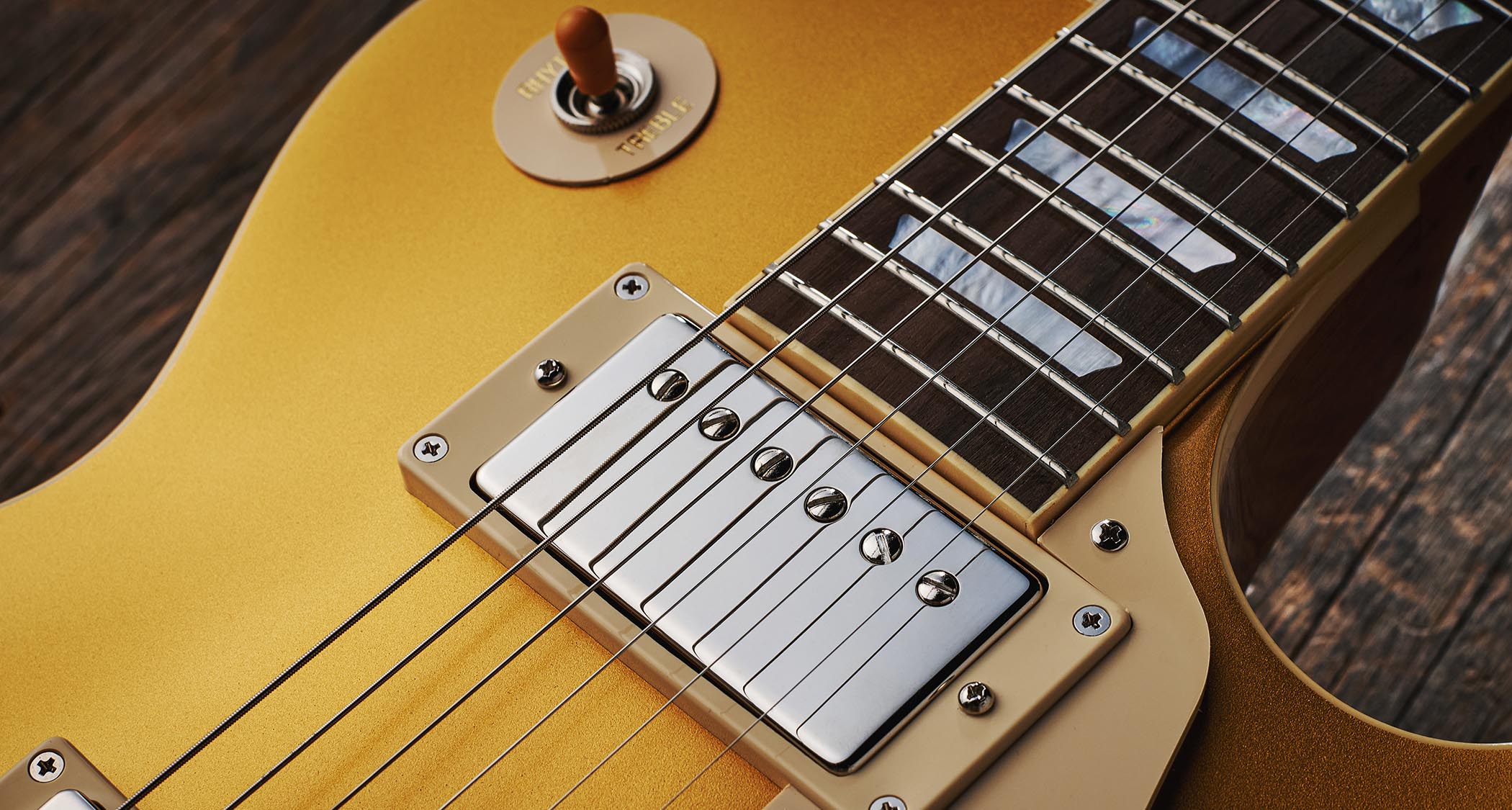
The finish not only looks classy, it feels it, too. And credit where it’s due: the neck shape and feel, not to mention the binding and fretwork, is really good. Yes, as befits its 50s reissue status, the fretwire is small (about 2mm wide by 1mm high), which isn’t a deal breaker, but, practically speaking, a slightly bigger wire, as used by Gibson USA, might give a slinkier feel and little more life before levelling and/or a refret becomes necessary.
Credit where it’s due: the neck shape and feel, not to mention the binding and fretwork, is really good
Dimensionally, things are pretty standard with the neck. There’s a 43mm nut width and a depth of 22.9mm at the 1st fret and 25.5mm by the 12th, which is very similar to Gibson’s current 50s profile and really not too far from our real 1957 Les Paul Junior, although that has a subtle hint of a V in lower positions that we don’t have here.
The supplied setup was okay, but the neck needed a little straightening, then the bridge needed raising, while a final polish on some upper position frets would alleviate the slightly gritty feel when you bend a string.
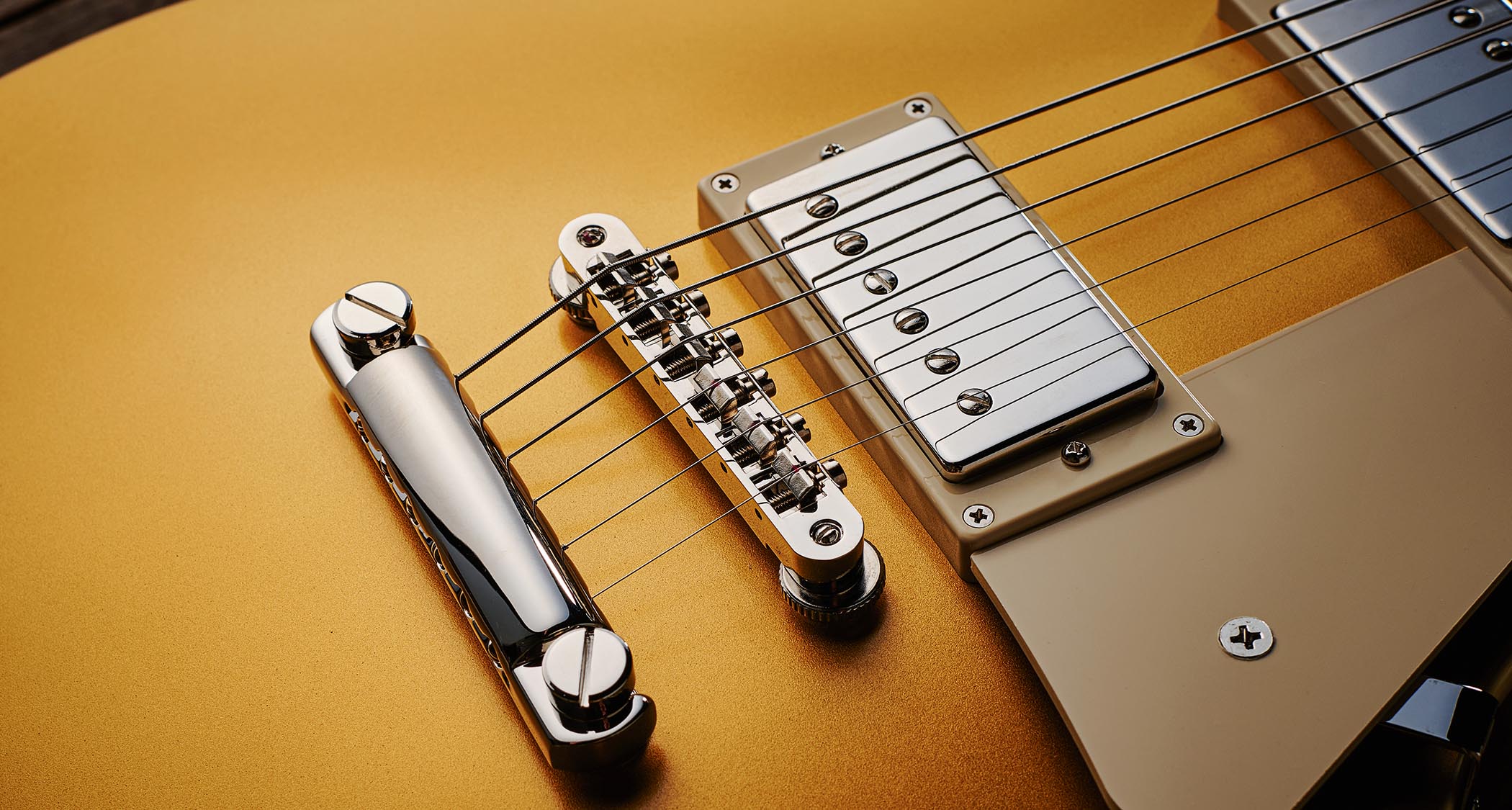
The nut work is really good – although the Graph Tech nut doesn’t look remotely vintage – and once everything had settled down the tuning stability was spot on, not least on those sometimes tricky G and D strings. This was quite possibly helped by the headstock’s back angle, which is slightly less steep than current Gibson USA models like our Classic.
While it’s (very) hard to ignore the weight here, we have few issues with the actual sounds we’re hearing. In the company of that Les Paul Classic with its retrofitted Burstbucker 1 and 2 (and lighter in weight at 4.1kg/9lb), well, it might be half the price, but it certainly isn’t half the sound in terms of quality.
There’s marginally less high-end detail with the controls full up, slightly less clarity to the neck humbucker, but it’s a beautiful creamy, not overthick Les Paul voice that this writer would use at the drop of a hat.
Find the sweet spot for the tone controls – wound back but not fully – and pull back the volumes and the sound cleans up producing a timeless, rounded ‘single voice’ rhythm sound, then you can pull either volume back up for your solos. It’s a classic way to drive any four-control Gibson with vintage-style wiring and really expands the design way beyond classic rock.
Verdict
Verdict: ★★★★½
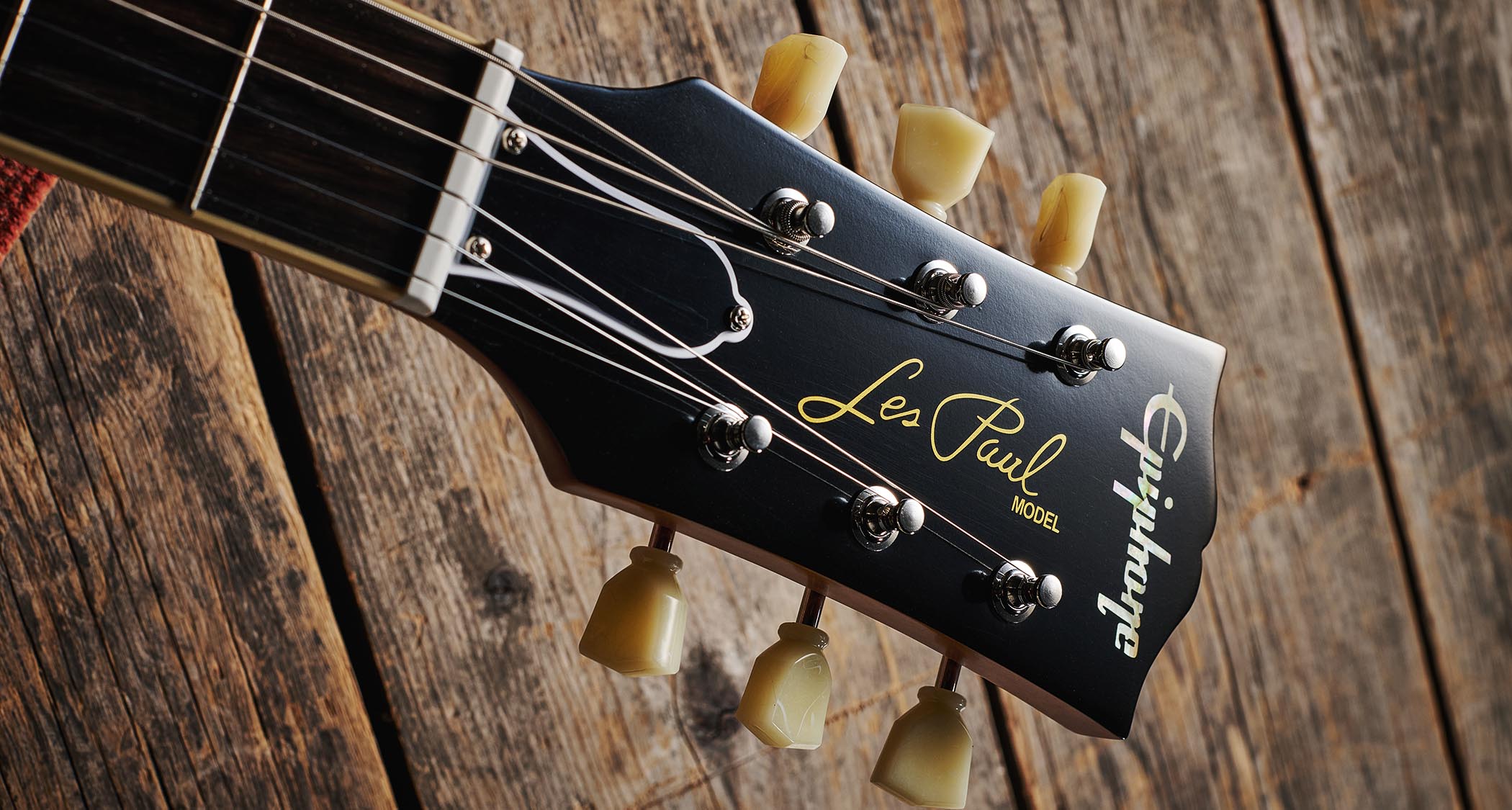
The price-point appeal here is obvious, and the thought of a vintage-aimed Les Paul at this price – aside from the logo on the headstock, of course – is hugely tempting, isn’t it?
There’s no denying the voice here, enhanced by those Custombuckers and vintage-style circuit, which reminds us of just why we’re still writing about these ancient designs
Weight selection clearly isn’t part of Epiphone’s QC process, and a little more care to the fret finishing and final setup would also be appreciated. But there’s no denying the voice here, enhanced by those Custombuckers and vintage-style circuit, which reminds us of just why we’re still writing about these ancient designs.
However, as we’ve said before, the choice of proper Les Paul models is now considerable, and with the low end of Gibson USA kicking off with the Studio at £1,499 you might simply be tempted to go with the right name on the headstock.
MusicRadar verdict: There is subtly more vintage flavour here, from the playing feel through to the sounds we hear. If these ‘Inspired By Gibson Custom’ Epiphones aren’t on your radar yet, they should be. Just check the weight and you might find a really vintage‑flavoured friend.







